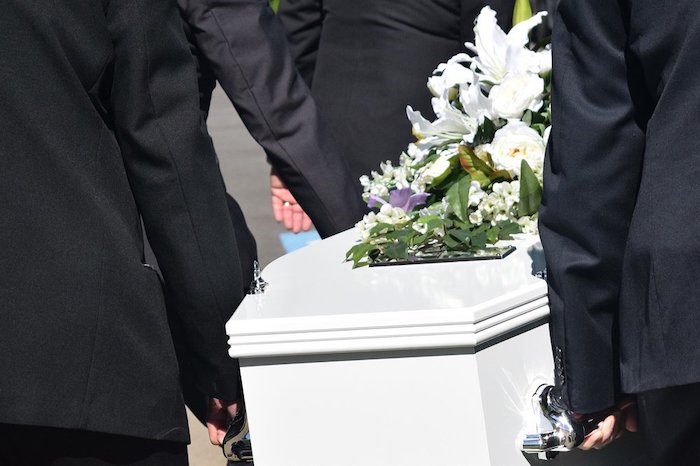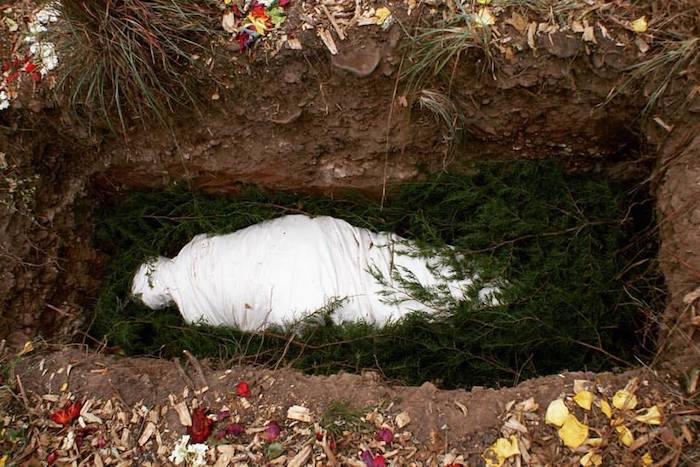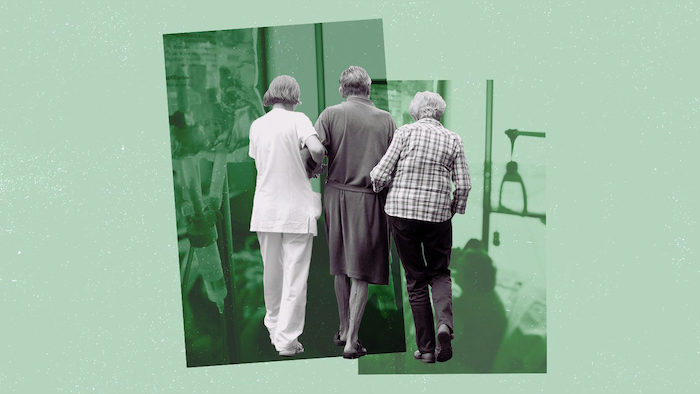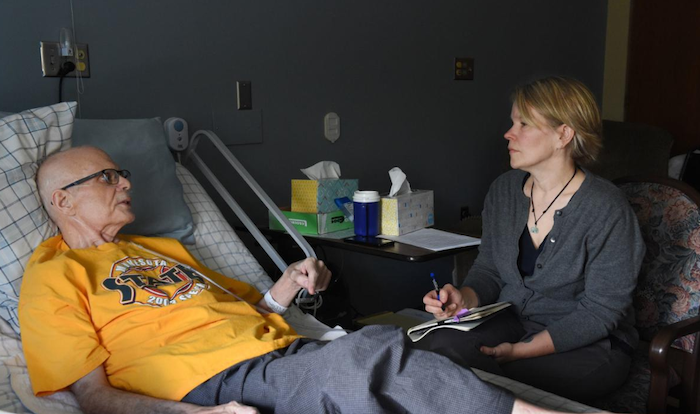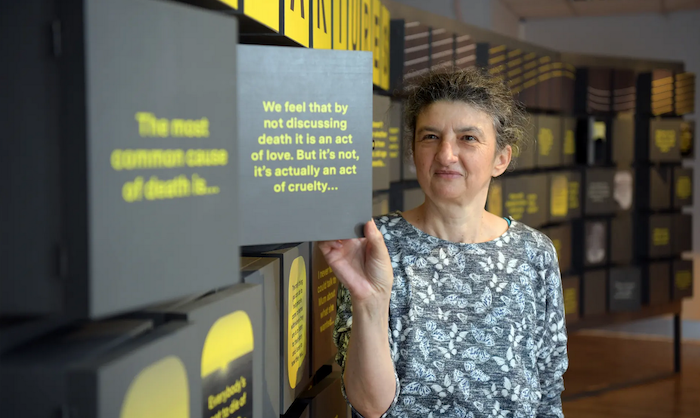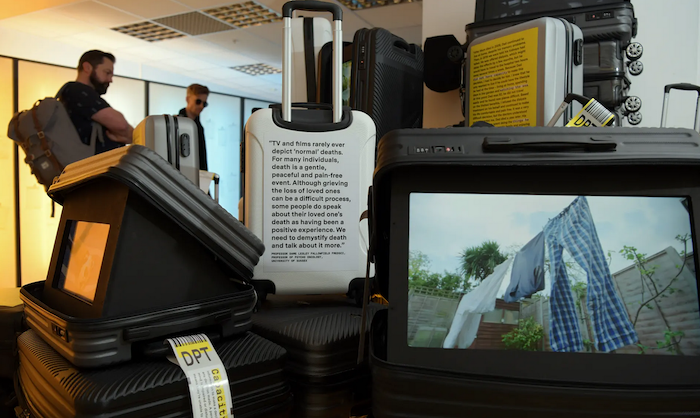Eco-Friendly Burial Options Explained.
Going green with natural burial options.
The tragic passing of longtime television heartthrob Luke Perry a few months ago put a spotlight on the subject of green and eco-friendly burial options. It was recently revealed that the late actor was buried in a mushroom suit, a special burial suit designed to aid in the natural process of decomposition, but more detail on that later.
Though it may not be a topic many of us are comfortable talking about – perhaps one we only think about when faced with a loss – knowing what is out there, and understanding eco-friendly burial, is worth some thought.
Why Go Green?
Burial in a casket and cremation are the most common methods of burial, however, these options actually have a significant negative impact on the environment. Burial in a traditional casket made of metal or plastic prevents the natural process of decomposition. These caskets can use chemical-based finishes, toxic plastics, and chemicals, like formaldehyde, that are used for traditional embalming, which is a carcinogen and poses a risk to those who work with it regularly.
Cremation, or a traditional-style casket, is often considered an eco-friendlier option due to the lack of land use. The process of cremation itself requires the burning of natural gas and, in turn, releases harmful greenhouse gases. Additionally, other harmful chemicals such as carbon monoxide, sulfur dioxide, nitrogen oxides, mercury, and hydrofluoric acid are released into the air. There is an eco-friendly process for cremation that has been developed, such as bio-cremation or water resolution, which is a process using water, heat, pressure, and potassium hydroxide to accomplish a cremation without toxic or harmful chemicals.
Green burials are burial practices that have a low environmental impact. Leaving a smaller, less harmful footprint on the planet as one’s last act conserves natural resources, preserves the environment, and also benefits the health of those who work in the industry by not using conventional embalming. The Green Burial Council is made up of two nonprofit organizations working together to further the green burial movement, support and develop more sustainable practices, and continue to honor those who have passed with respect for their lives, treating both the earth and the grief and burial process with respect.
A natural burial, in industry terms, specifically means a burial where the body is interred in the ground without the use of a vault, a traditional casket, or any chemicals. The deceased is wrapped in a biodegradable shroud or uses a pine or woven wicker casket. The options continue to grow as cemeteries around the country have begun to offer natural burial grounds.
Natural and eco-friendly burial options have been growing in popularity over the last 20 years or so. Pine, cardboard, bamboo, and willow are all earth-friendly material used to make caskets that leave less of an impact on the environment. Urns have been fashioned out of biodegradable materials, such as seashell shaped urns made from recycled paper and clay, designed to break down once placed in a body of water, and cornstarch, which eventually biodegrades completely. The options continue to grows as interest in environmentally friendly burial grows.
About That Suit
Luke Perry chose to be placed into eternal rest wearing Coeio’s “Infinity Burial Suit”, a burial garment made with totally natural and biodegradable components, including microorganisms and mushrooms with a job to do. The specially designed suit has three goals: to help in the decomposition process, to neutralize toxins from the body, and to transmit nutrients back into plant life, thus completing the process by restarting life. The company plants two trees for every suit and shroud sold, another step in its goal to continue the cycle of life. The suit costs $1,500 and is available for order online.
The average casket cost anywhere from $2,000 to $5,000, though the price tag can top $10,000. The cost of cremation is about $1,000, and none of those estimates include funeral services. So while a $1,500 price tag seems steep in comparison it is actually on the less pricey side of the choices.
The choice to be interred in a mushroom suit was not about fashion or headlines, it was a choice an individual made to give back in a unique way. Due to his celebrity status, that choice brings awareness to this delicate subject.
Keeping It Local
We have plenty of options for going green in the afterlife right here in Colorado, and most are locally owned businesses and products. Here is a breakdown of some of the green and natural burial options the Centennial state has to offer.
- Roselawn Cemetery in Fort Collins and Evergreen Memorial Park in Evergreen are two of the cemeteries that offer a range of green and natural burial options in Colorado.
- Crestone Cemetary Natural Burial Ground located in Crestone, Colorado, is the state’s first and only natural burial ground to be Green Burial Council certified.
- Nature’s Casket out of Longmont creates handcrafted caskets using pine trees killed from pine beetles. Repurposing these trees into blue-stained pine caskets, their products are 100 percent biodegradable and use all non-toxic materials. Though these caskets are only available in Colorado, the company also offers a selection of intricately handcrafted pine urns and provides free shipping on them nationwide.
- The Natural Funeral is an independent local funeral home located in Lafayette that specializes in green and natural funeral methods. Using locally produced and naturally made products, they offer a variety of green funeral options, including pine caskets from Nature’s Casket, cardboard caskets, handmade and painted pine urns, and custom crafted painted gourd urns. Living urns, seed pods, and water urns are also offered as are bamboo burial shrouds.
- Goes Funeral Care in Fort Collins is another local funeral business that works with the Green Burial Council and offers a range of green burial options at either Crestone or Roselawn Cemetery.
- Seven Stones Chatfield is a botanical gardens cemetery located in Littleton. Seven Stones offers many different burial options and is very different than the somber rows of headstones one might find in a traditional cemetery. An artistic and peaceful place, Seven Stones offers artistic memorials and tributes made individually to honor everyone laid to rest there. Cremation gardens with sculptures and walking paths, waterfalls, and quiet spots to sit and remember. Green burial options are available and growing, with a Meadow of tall grass and natural granite boulder markings. There is even a spot to remember our furry family members with green burial and a pet memorial area. A unique and intriguing place Seven Stones also celebrates life by hosting events such as art, music, and nature festivals throughout the year.
Donate Your Body to Science
For some people, this can be a final act of giving back, perhaps too old or sick to donate organs; some will choose to let their body be used for medical and academic research. This is actually far more common than one might think, and there a plenty of options here in Colorado.
If you are one of those people who may want to give back by letting your body be a research tool, you can do it at no cost. Science Care Colorado has a donor registry where people can sign up and pre-register to become a donor.
Most of the major universities have donor programs, as well, and work with the State Anatomical Board to use these gifts to learn and better serve patients. The University of Colorado School of Medicine at Anschutz Medical Campus holds an annual Donor Memorial Ceremony each spring to remember, honor, and thank those who have given of their bodies in this way. It is a highly emotional event and brings together the community, the families of the deceased, and those who have learned from them.
Former Vice Chancellor for Health Affairs and former Dean of the school of Medicine Richard D. Krugman, MD offers this statement on the donor memorial:
“I have always been impressed that the Anatomical Donor Memorial Service is one of our most emotional events. Just what this service means for students and donors’ families and friends really resonated in a letter I received last week from a woman who wrote, ‘I was the ancient, white-haired lady in the second or third row weeping through most of it. Not just sadness, but a lot of gratitude, empathy and happiness. It was so well done – the prayers, the Arrhythmias (our student a capella group), the student bagpiper, and the very touching speakers … It was emotional, full of respect and in every way, it meant a great deal of closure for me.'”
Preserving the planet goes far beyond recycling soda cans and not using plastic straws. And all of us, celebrity or not, can make a difference in this unexpected way. Though it is an uncomfortable subject, it is one we will all face at some point, for ourselves and for loved ones.
Have you thought about green and natural burial options? Is there an option or place that you know of here in Colorado that we missed? Please share your thoughts and sentiments with us in the comments below.
Complete Article ↪HERE↩!

